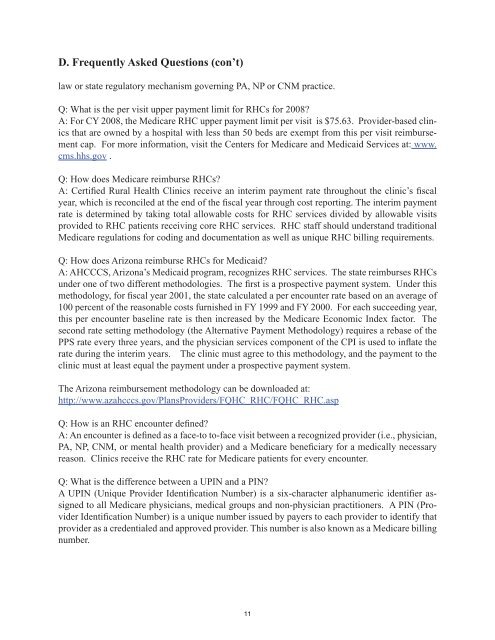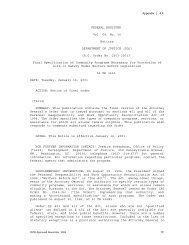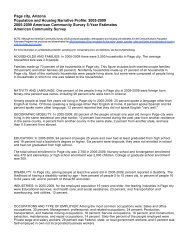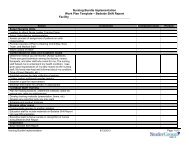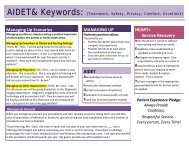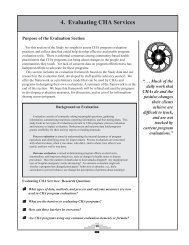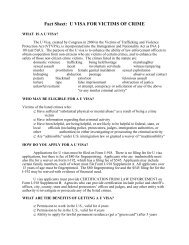Arizona Rural Health Clinic Designation Manual - Arizona Center for ...
Arizona Rural Health Clinic Designation Manual - Arizona Center for ...
Arizona Rural Health Clinic Designation Manual - Arizona Center for ...
You also want an ePaper? Increase the reach of your titles
YUMPU automatically turns print PDFs into web optimized ePapers that Google loves.
D. Frequently Asked Questions (con’t)<br />
law or state regulatory mechanism governing PA, NP or CNM practice.<br />
Q: What is the per visit upper payment limit <strong>for</strong> RHCs <strong>for</strong> 2008<br />
A: For CY 2008, the Medicare RHC upper payment limit per visit is $75.63. Provider-based clinics<br />
that are owned by a hospital with less than 50 beds are exempt from this per visit reimbursement<br />
cap. For more in<strong>for</strong>mation, visit the <strong>Center</strong>s <strong>for</strong> Medicare and Medicaid Services at: www.<br />
cms.hhs.gov .<br />
Q: How does Medicare reimburse RHCs<br />
A: Certified <strong>Rural</strong> <strong>Health</strong> <strong>Clinic</strong>s receive an interim payment rate throughout the clinic’s fiscal<br />
year, which is reconciled at the end of the fiscal year through cost reporting. The interim payment<br />
rate is determined by taking total allowable costs <strong>for</strong> RHC services divided by allowable visits<br />
provided to RHC patients receiving core RHC services. RHC staff should understand traditional<br />
Medicare regulations <strong>for</strong> coding and documentation as well as unique RHC billing requirements.<br />
Q: How does <strong>Arizona</strong> reimburse RHCs <strong>for</strong> Medicaid<br />
A: AHCCCS, <strong>Arizona</strong>’s Medicaid program, recognizes RHC services. The state reimburses RHCs<br />
under one of two different methodologies. The first is a prospective payment system. Under this<br />
methodology, <strong>for</strong> fiscal year 2001, the state calculated a per encounter rate based on an average of<br />
100 percent of the reasonable costs furnished in FY 1999 and FY 2000. For each succeeding year,<br />
this per encounter baseline rate is then increased by the Medicare Economic Index factor. The<br />
second rate setting methodology (the Alternative Payment Methodology) requires a rebase of the<br />
PPS rate every three years, and the physician services component of the CPI is used to inflate the<br />
rate during the interim years. The clinic must agree to this methodology, and the payment to the<br />
clinic must at least equal the payment under a prospective payment system.<br />
The <strong>Arizona</strong> reimbursement methodology can be downloaded at:<br />
http://www.azahcccs.gov/PlansProviders/FQHC_RHC/FQHC_RHC.asp<br />
Q: How is an RHC encounter defined<br />
A: An encounter is defined as a face-to to-face visit between a recognized provider (i.e., physician,<br />
PA, NP, CNM, or mental health provider) and a Medicare beneficiary <strong>for</strong> a medically necessary<br />
reason. <strong>Clinic</strong>s receive the RHC rate <strong>for</strong> Medicare patients <strong>for</strong> every encounter.<br />
Q: What is the difference between a UPIN and a PIN<br />
A UPIN (Unique Provider Identification Number) is a six-character alphanumeric identifier assigned<br />
to all Medicare physicians, medical groups and non-physician practitioners. A PIN (Provider<br />
Identification Number) is a unique number issued by payers to each provider to identify that<br />
provider as a credentialed and approved provider. This number is also known as a Medicare billing<br />
number.<br />
11


